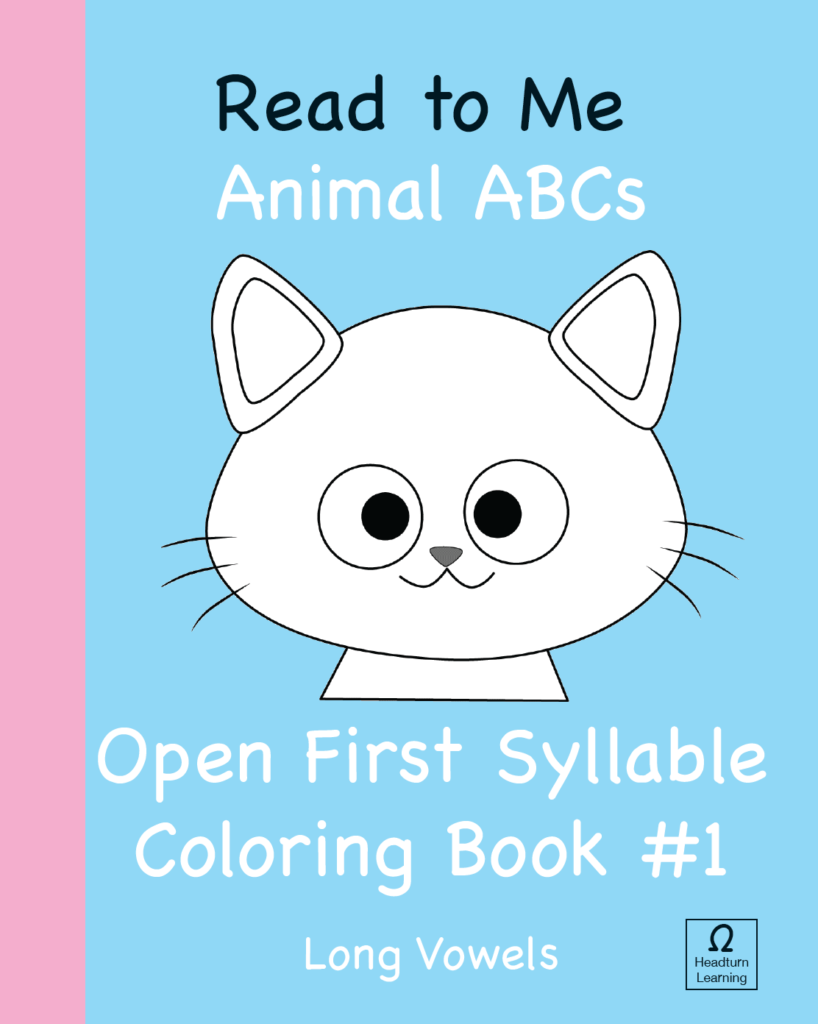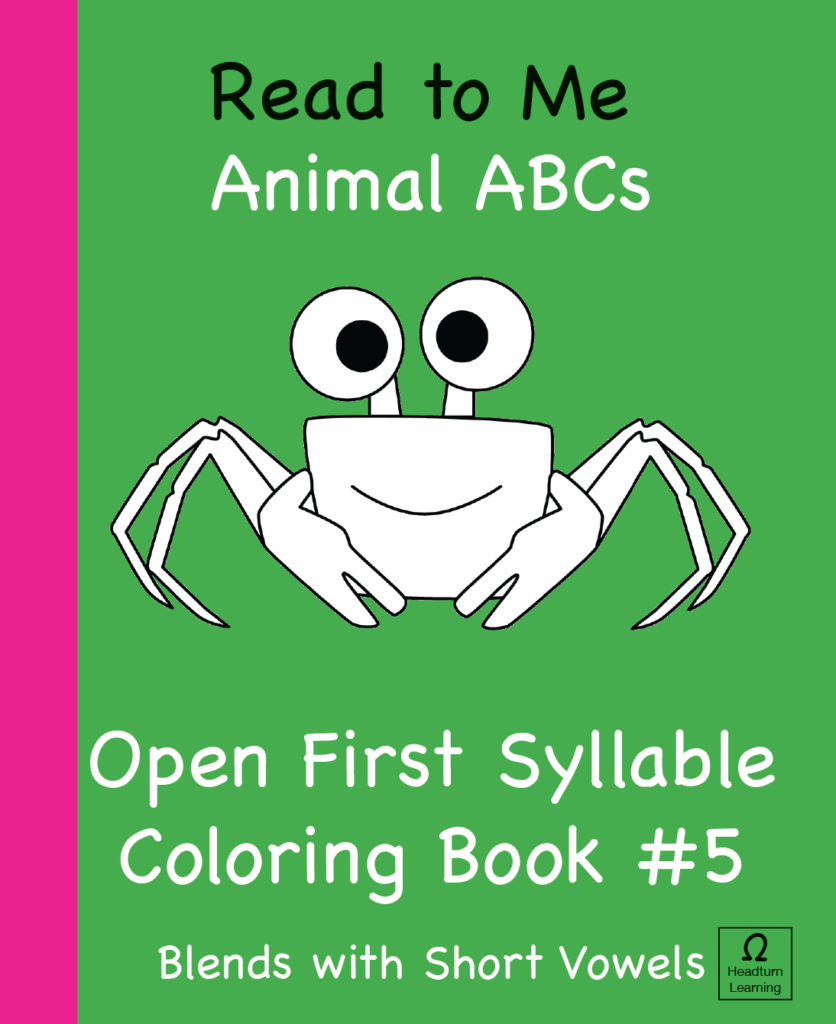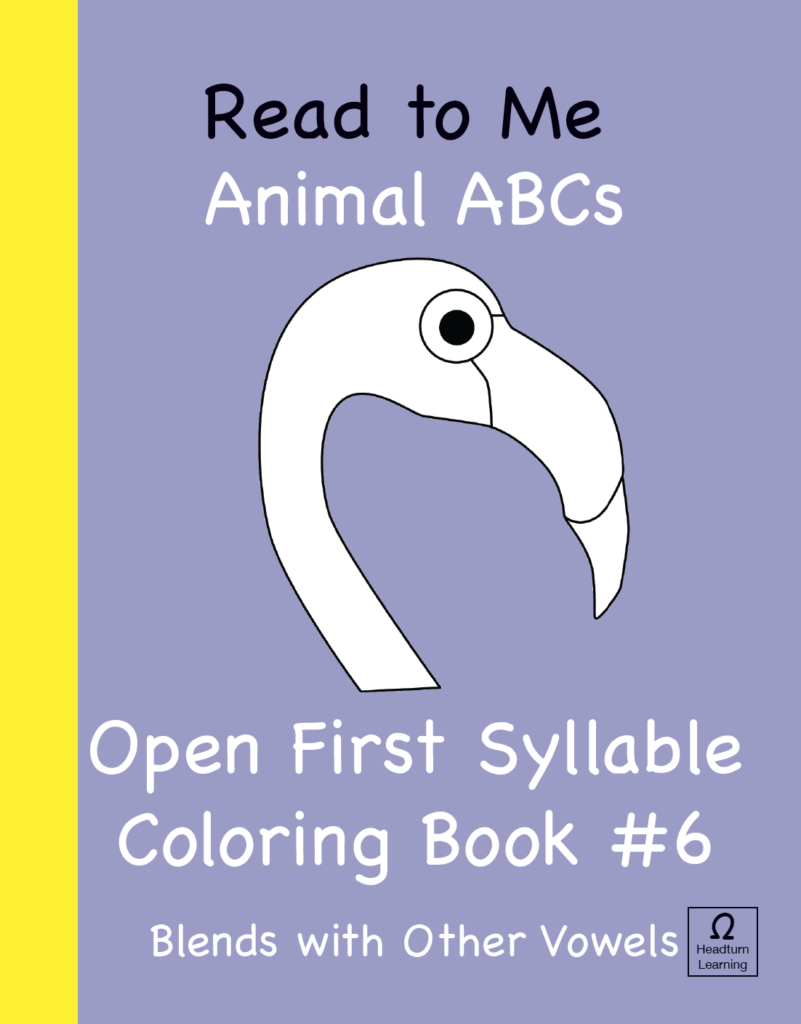Read to me
Animal ABC
coloring Books
The six Read to Me Animal ABCs coloring books collect all the open syllable sounds and present them as the names of animals.
We started with the long and short vowels, and ended with the vowel sounds that are neither long nor short. Our goal in writing the books was to create a dictionary-like collection of all these foundational sounds. We omitted a few odd-ball sounds for which we could find no animal representative or which were used in fewer than five English words.
All together, there are over 600 open syllables in this collection. They are all used in English speech, and a child needs to know all of them by the time they enter kindergarten and learn the closed syllable patterns.
It’s important for infants to hear the open syllable sounds spoken by their caregivers. Research shows this is the way infants learn these sounds.
To make it possible to read 600+ syllables aloud to a child, we made them into rhyming couplets. They can be sung or spoken to the rhythm of Twinkle, Twinkle Little Star.
Each couplet makes a poem around an animal name. The words of the poem use all the possible sounds the target consonant or blend makes with each of the 14 vowel sounds. This way of collecting similar sounds allows a child to easily hear the different sounds and to compare and contrast the sounds.
The coloring activity is there for fun as you read the poems.
Long Vowels
Long vowels say their letter names. You may remember this from grade school. These are long a, long e, long i, long o, and long u. This first book uses the consonant (alphabet) sounds with each of the long vowels. The open syllables bay and bee are examples, with the consonant “b“ used with the long a and long e, respectively.
other vowels
The other vowels are vowels that are neither long nor short such as the diphthong sounds of toy and cow, the schwa sound, and the er sound. Diphthongs are vowel sounds that begin and end in two places in the mouth.The schwa sound is the “uh” sound found in nutty. The er sound is a constant push of air that makes the “ir“ sound in bird. These sounds are used with each of the consonant sounds.



